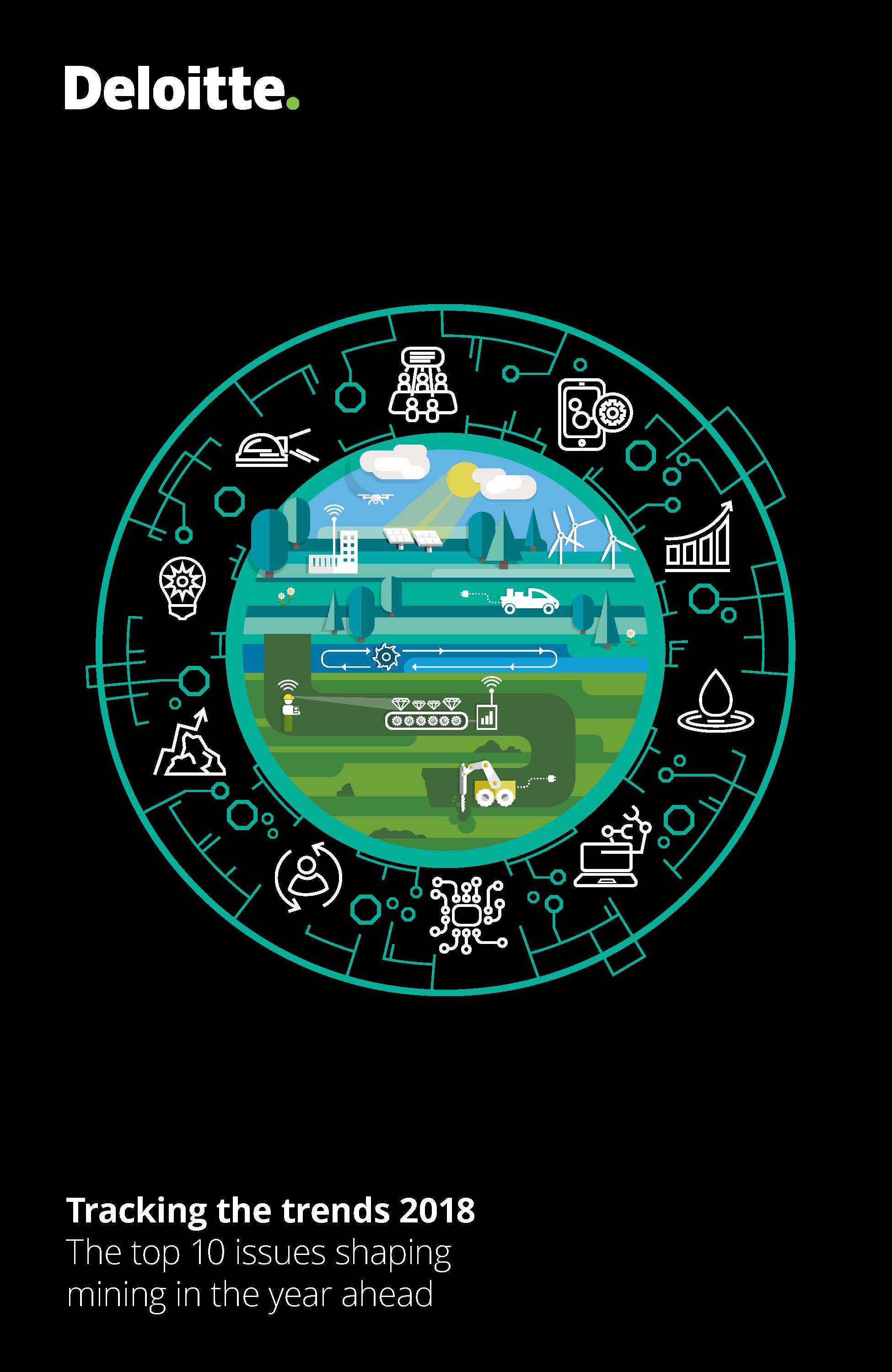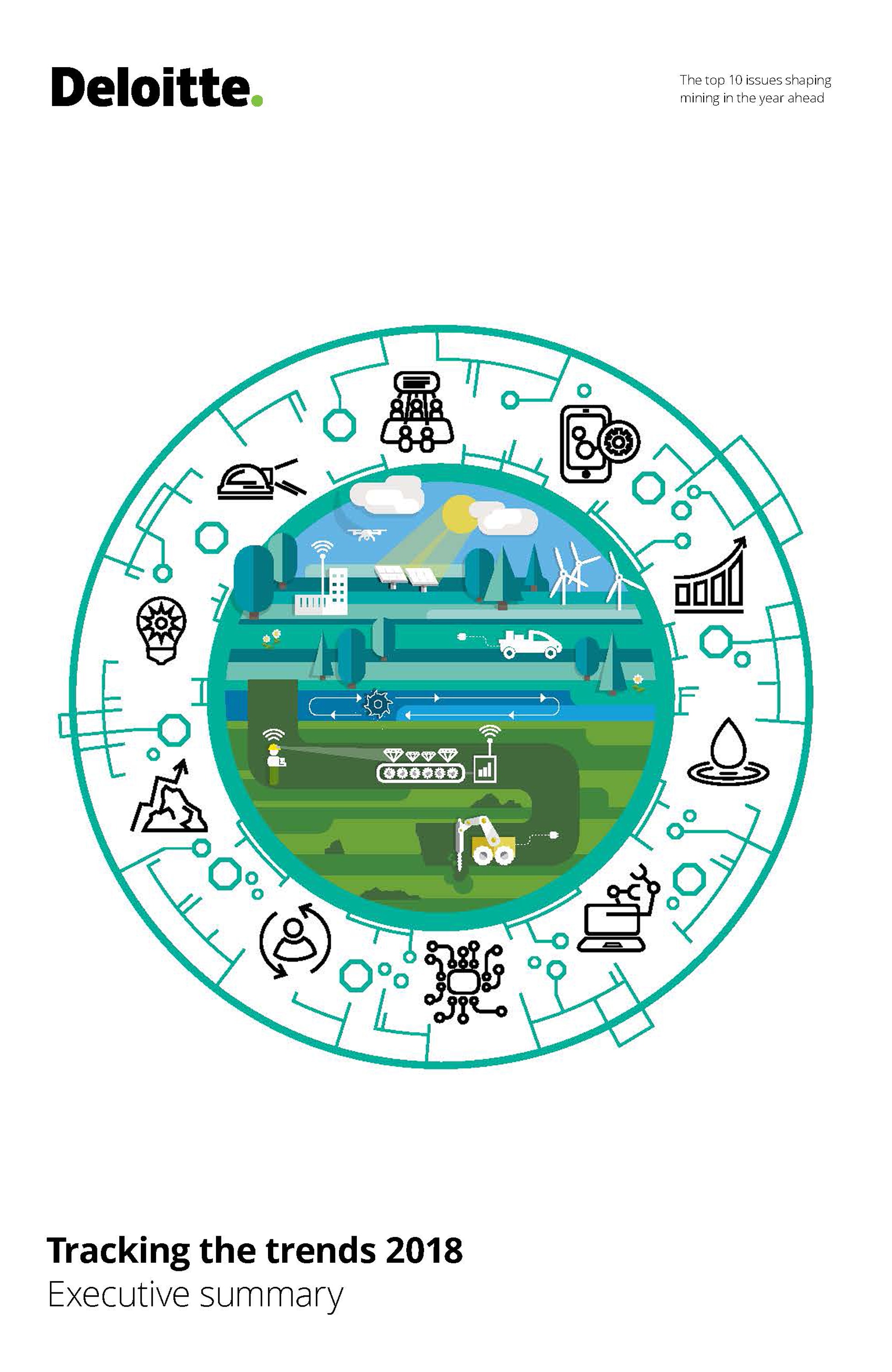Tracking the trends 2018 has been saved
Article
Tracking the trends 2018
The top 10 issues shaping mining in the year ahead
The 2018 edition of Tracking the trends takes a look at the trends that miners will face in the coming year and outlines a wealth of potential responses proposed from Deloitte member firms' mining professionals.
Changing for the better
The 2018 edition of Tracking the trends will mark the tenth year of release. Deloitte examines the top 10 trends that should be on mining companies’ agenda in 2018.
Over the past decade, commodity prices reached both historic highs and historic lows, mining companies engaged in both significant acquisitions and consolidation, and operational realities shifted irrevocably in the face of a digital revolution. For an industry considered staid, change has been surprisingly constant. However, unlike previous cycles, mining companies appear to have learned from the lessons of the past. In paving new paths for the future, the aim now is to change for the better.
In this tenth anniversary report, Deloitte’s global mining professionals once again share their experiences to help identify strategies mining companies can take to smooth out the recovery and minimize the industry’s historical boom and bust cycle. This year, our professionals also share their “best guess outlook” for the future by identifying potential industry disruptors on the horizon.
2018 mining trends

Bringing digital to life
Using data-driven insights to drive value

Courageous businesses use thorough, rational analysis grounded in data to develop new ideas, investments and innovations both adjacent and transformational to current business. They use analysis to see opportunities where others see challenges or unchangeable customs.

Overcoming innovation barriers
Charting a path towards innovation maturity

Mining executives understand that innovation is necessary for the industry to transform. This isn't confined to just technological innovation; it includes the adoption of more innovative approaches to engaging with stakeholders, re-envisioning the future of work, and identifying the commodities that will be in greatest demand going forward. Despite the imperative, however, industry players cannot yet be considered truly mature innovators partly, because mining companies continue to face a number of systemic barriers to innovation.

The future of work
Re-envisioning talent management in the digital age

As the digital mine becomes a reality, the nature of work is poised to change dramatically—at both the mine site and in the back office. Technologies like robotic process automation (RPA) and artificial intelligence (AI) will enable core mining activities to be performed from locations that can support a more diverse and inclusive workforce.

The image of mining
Changing public, employee, and customer perceptions

Although the sector has taken significant strides to improve the image of mining in recent years, it is still operating under a legacy of weak environmental practices, fractious community relations, stock price underperformance relative to other sectors, and a historic lack of workforce diversity. In a world increasingly influenced by 24x7 news cycles and opinions aired in the court of social media, this type of backlash is only bound to spiral. This mandates mining companies to take proactive steps to address—and change—their reputations.

Transforming stakeholder relationships
The growing need to achieve measurable social outcomes

To expand local employment opportunities, increase tax revenues, and meet spiraling community demands for improved infrastructure and greater environmental protection, many governments of resource-rich countries continue to put pressure on the mining industry. As a result, the industry is increasingly coming to realize that its traditional approaches to community and government relations must change.

Water management
Finding sustainable solutions to a pressing issue

With each passing year, water has become a more critical issue for the mining sector. As ore grades decline, more water is needed to extract the same amount of ore, pushing up water requirements in the industry. As concerns around water availability grow, communities and environmental groups are turning the spotlight on water-intensive industries, including mining. In light of these challenges, mining companies must enhance their approach to water management.

Changing shareholder expectations
Investors demand greater accountability

With commodity prices on the uptick, it's no surprise that shareholders and institutional investors are carefully monitoring the sector to assess if companies are in danger. In some cases, shareholders are making it clear that they expect a return of value as corporate fortunes rise, and in other cases they are becoming more vocal by engaging in activism in a bid to influence operational decisions. As shareholder expectations spiral, mining companies have begun focusing on re—establishing their credibility in the investor community and with analysts.

Reserve replacement woes
Finding a balance between caution and courage

Mining companies are no strangers to the boom and bust cycles typically associated with shifting commodity supply and demand. Thanks to intense cost cutting, a focus on fundamentals, and a commitment to portfolio simplification, the fortunes of many mining companies are on the rebound. Yet this tentative turnaround cannot remedy the supply constraints that currently plague the industry. Mining companies will need to find a more agile way of replacing reserves—one that allows them to engage in exploration and development without sinking in large amounts of capital for long periods of time.

Reserve replacement woes
Finding a balance between caution and courage

Mining companies must embrace the full power of digitization and innovation and attract a new brand of talent, to transition to the mine of the future. Heightened scrutiny from governments, communities, investors, and other key stakeholders mandates new forms of cooperation and collaboration. To repair broken relationships and tarnished reputations, miners must also explore ways to operate more sustainably. These drivers and more make it clear that companies will need to make substantive cultural shifts.

Commodities of the future
Predicting tomorrow's disruptors

Given how inextricably socioeconomic trends link to commodity demand, mining executives have long had to double as futurists. To assess which commodities to invest in, and which to divest, miners need to keep their fingers on the pulse of fluctuating consumer demands, global demographic and economic shifts, and the effects of environmental change.
Executive summary 2017
Philosopher Friedrich Nietzche—admittedly not the cheeriest of men—was once quoted as saying “There are no facts, only interpretations.” The observation is surprisingly salient for today’s mining executives, whose perceptions of the market are strongly influenced by their particular operational realities.
Companies that mine iron ore or thermal coal, for instance, have an entirely different outlook than those heavily weighted in precious metals. Diversified miners face different challenges than companies with a niche commodity focus. Major producers are planning for a very different future than the one that appears on the horizon of most junior explorers.
These divergent views of the industry’s prospects emphasize a widening gulf in the sector. It seems no longer possible, if it ever was, to discuss the mining industry as a cohesive whole. This largely explains why so many companies are adopting such different strategic responses. Yet, although their approaches to the future will differ, all miners should be asking one common question: going forward, where should we play and how can we win?
The 2017 edition of Tracking the trends explores the top 10 issues mining companies may face. Once again, Deloitte’s global mining professionals share their experiences to help pinpoint strategies companies can take to succeed in today’s ever-changing market environment. This year, we also included a range of case studies to showcase how some companies are bringing new solutions to life.




